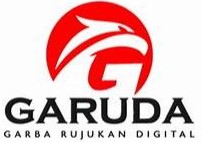Sintesis Dimensi Manipulator Paralel Bidang Dua Derajat Kebebasan Dengan Rantai Kinematik Paralelogram Simetris
DOI: https://doi.org/10.25077/metal.5.2.72-85.2021
Author(s)
Adriyan Adriyan (Sekolah Tinggi Teknologi Nasional)
Abstract
Keywords
Full Text:
PDFReferences
S. Huda and Y. Takeda, “Dimensional Synthesis of 3-URU Pure Rotational Parallel Mechanism with Respect to Singularity and Workspace,” in 12th IFToMM World Congress, 2007, pp. 1–6.
S. Huda, B. Harianto, and M. Bur, “Kinematic Design of Three Degrees of Freedom Planar Parallel Mechanism with Consideration of Workingspace , Singularity and Dexterity,” in Proceeding Seminar Nasional Tahunan Teknik Mesin XIV (SNTTM XIV), 2015, p. MT71 1-5.
C. M. Gosselin and J. Angeles, “The optimum kinematic design of a spherical three degree of freedom parallel manipulator,” J. Mech. Trans. Autom. Des., vol. 111, no. 2, pp. 202–207, 1989.
C. M. Gosselin and J. Angeles, “A global performance index for the kinematic optimization of robotic manipulators,” Trans. ASME J. Mech. Des., vol. 131, pp. 220–226, 1991.
X. Liu, C. Wu, and J. Wang, “A new index for the performance evaluation of parallel manipulators: a study on planar parallel manipulators,” in Proceedings of the 7th World Congress on Intelligent Control and Automation, 2008, pp. 353–357, doi: 10.1109/WCICA.2008.4592950.
X. J. Liu, C. Wu, and J. Wang, “A New Approach for Singularity Analysis and Closeness Measurement to Singularities of Parallel Manipulators,” J. Mech. Robot., vol. 4, pp. 1–10, 2015, doi: 10.1115/1.4007004.
A. Kumar and K. J. Waldron, “The Workspaces of a Mechanical Manipulator,” J. Mech. Des., vol. 103, pp. 665–672, 1981.
P. Zhang, Z. Yao, and Z. Du, “Global Performance Index System for Kinematic Optimization of Robotic Mechanism,” J. Mech. Des., vol. 136, no. March, pp. 1–11, 2014, doi: 10.1115/1.4026031.
X. J. Liu, J. Wang, and G. Pritschow, “Performance atlases and optimum design of planar 5R symmetrical parallel mechanisms,” Mech. Mach. Theory, vol. 41, no. 2, pp. 119–144, 2006, doi: 10.1016/j.mechmachtheory.2005.05.003.
X. J. Liu and J. Wang, “A new methodology for optimal kinematic design of parallel mechanisms,” Mech. Mach. Theory, vol. 42, pp. 1210–1224, 2007, doi: 10.1016/j.mechmachtheory.2006.08.002.
X. J. Liu and J. J. Wang, Parallel Kinematics: Type, Kinematics, and Optimal Design. Heidelberg: Springer, 2014.
X.-J. J. Liu, J. Li, and Y. Zhou, “Kinematic optimal design of a 2-degree-of-freedom 3-parallelogram planar parallel manipulator,” Mech. Mach. Theory, vol. 87, pp. 1–17, 2015, doi: 10.1016/j.mechmachtheory.2014.12.014.
X. J. Liu, J. Wang, and G. Pritschow, “Kinematics, singularity and workspace of planar 5R symmetrical parallel mechanisms,” Mech. Mach. Theory, vol. 41, no. 2, pp. 145–169, 2006, doi: 10.1016/j.mechmachtheory.2005.05.004.
G. Chiandussi, M. Codegone, S. Ferrero, and F. E. Varesio, Comparison of multi-objective optimization methodologies for engineering applications, vol. 63, no. 5. Elsevier Ltd, 2012.
K. Deb, A. Member, A. Pratap, S. Agarwal, and T. Meyarivan, “A Fast and Elitist Multiobjective Genetic Algorithm :,” vol. 6, no. 2, pp. 182–197, 2002.
L. Wang, J. Ding, and L. Zhang, “Multiobjective Optimization of 6-DOF Parallel Manipulator for Desired Total Orientation Workspace,” Math. Probl. Eng., vol. 2019, 2019, doi: 10.1155/2019/5353825.
G. Wu, “Multiobjective Optimum Design of a 3-RRR Spherical Parallel Manipulator with Kinematic and Dynamic Dexterities,” Model. Identif. Control, vol. 33, no. 3, pp. 111–122, 2012, doi: 10.4173/2012.3.3.
F. A. Lara-Molina, D. Dumur, and K. Assolari Takano, “Multi-objective optimal design of flexible-joint parallel robot,” Eng. Comput., vol. 35, no. 8, pp. 2775–2801, 2018, doi: 10.1108/EC-01-2018-0015.
Adriyan, “Analisis Kinematika dan Singularitas Manipulator Paralel Bidang 2 DOF dengan Rantai Kinematik Paralelogram Simetris,” J. Tek. Mesin, vol. 10, no. 2, pp. 79–87, 2020.
C. R. Harris et al., “Array programming with NumPy,” Nature, vol. 585, no. 7825, pp. 357–362, 2020, doi: 10.1038/s41586-020-2649-2.
J. Blank and K. Deb, “Pymoo: Multi-Objective Optimization in Python,” IEEE Access, vol. 8, pp. 1–12, 2020, doi: 10.1109/ACCESS.2020.2990567.
F. Xie, X. Liu, and J. Li, “Performance Indices for Parallel Robots Considering Motion/Force Transmissibility,” in International Conference on Intelligent Robotics and Applications, 2014, no. December, pp. 35–43, doi: 10.1007/978-3-319-13966-1.
 Article Metrics
Article Metrics
This article has been read : 284 timesPDF file viewed/downloaded : 82 times
Copyright (c) 2021 Adriyan Adriyan
View METAL's Stats

This work is licensed under a Creative Commons Attribution-NonCommercial-ShareAlike 4.0 International License.







